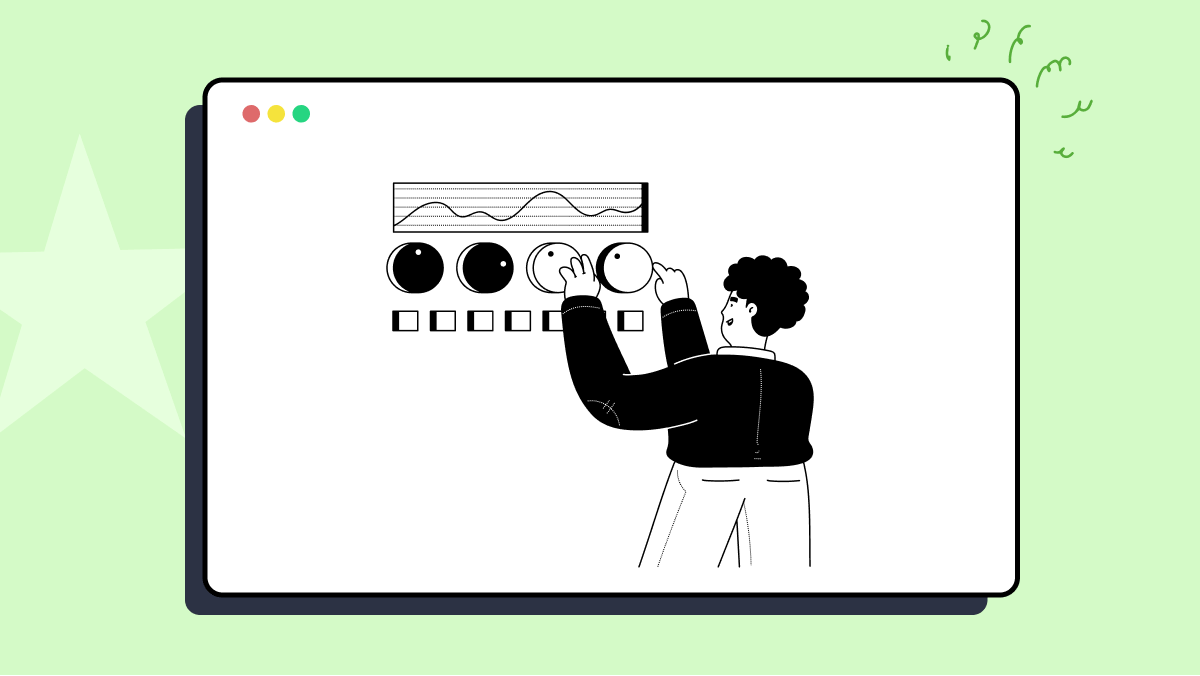How to use testArrayArguments method of com.tngtech.jgiven.impl.ScenarioModelBuilderTest class
Best JGiven code snippet using com.tngtech.jgiven.impl.ScenarioModelBuilderTest.testArrayArguments
Source:ScenarioModelBuilderTest.java
...107 };108 }109 @Test110 @UseDataProvider("argumentTestData")111 public void testArrayArguments(Object argument, String expected) throws Throwable {112 startScenario("test");113 given().an_array(argument);114 getScenario().finished();115 StepModel step = getScenario().getScenarioCaseModel().getFirstStep();116 assertThat(step.getWords().get(2).getValue()).isEqualTo(expected);117 }118 @Test119 public void characters_are_not_dropped_when_using_the_As_annotation() throws Throwable {120 startScenario("Scenario with a @As tag");121 given().a_step_with_a_bracket_after_a_dollar(42);122 getScenario().finished();123 StepModel step = getScenario().getScenarioCaseModel().getFirstStep();124 assertThat(step.getCompleteSentence()).isEqualTo("Given a step with a bracket after a dollar 42 ]");125 }...testArrayArguments
Using AI Code Generation
1List<String> arguments = new ArrayList<String>();2arguments.add("com.tngtech.jgiven.impl.ScenarioModelBuilderTest");3arguments.add("testArrayArguments");4ScenarioModelBuilderTest test = new ScenarioModelBuilderTest();5test.testArrayArguments(arguments);6ScenarioModelBuilderTest test = new ScenarioModelBuilderTest();7test.testArrayArguments("com.tngtech.jgiven.impl.ScenarioModelBuilderTest", "testArrayArguments");8ScenarioModelBuilderTest test = new ScenarioModelBuilderTest();9test.testArrayArguments("com.tngtech.jgiven.impl.ScenarioModelBuilderTest", "testArrayArguments");10ScenarioModelBuilderTest test = new ScenarioModelBuilderTest();11test.testArrayArguments("com.tngtech.jgiven.impl.ScenarioModelBuilderTest", "testArrayArguments");12ScenarioModelBuilderTest test = new ScenarioModelBuilderTest();13test.testArrayArguments("com.tngtech.jgiven.impl.ScenarioModelBuilderTest", "testArrayArguments");14ScenarioModelBuilderTest test = new ScenarioModelBuilderTest();15test.testArrayArguments("com.tngtech.jgiven.impl.ScenarioModelBuilderTest", "testArrayArguments");16ScenarioModelBuilderTest test = new ScenarioModelBuilderTest();17test.testArrayArguments("com.tngtech.jgiven.impl.ScenarioModelBuilderTest", "testArrayArguments");18ScenarioModelBuilderTest test = new ScenarioModelBuilderTest();19test.testArrayArguments("com.tngtech.jgiven.impl.ScenarioModelBuilderTest", "testArrayArguments");testArrayArguments
Using AI Code Generation
1public void testArrayArguments() {2 given().some_step();3 when().some_step();4 then().some_step();5}6public void testArrayArguments() {7 given().some_step();8 when().some_step();9 then().some_step();10}11public void testArrayArguments() {12 given().some_step();13 when().some_step();14 then().some_step();15}16public void testArrayArguments() {17 given().some_step();18 when().some_step();19 then().some_step();20}testArrayArguments
Using AI Code Generation
1public class GivenSomeState extends com.tngtech.jgiven.base.ScenarioStage<GivenSomeState> {2 public GivenSomeState some_state() {3 return self();4 }5}6public class WhenSomeAction extends com.tngtech.jgiven.base.ScenarioStage<WhenSomeAction> {7 public WhenSomeAction some_action() {8 return self();9 }10}11public class ThenSomeOutcome extends com.tngtech.jgiven.base.ScenarioStage<ThenSomeOutcome> {12 public ThenSomeOutcome some_outcome() {13 return self();14 }15}16public class ScenarioModelBuilderTest extends com.tngtech.jgiven.impl.ScenarioModelBuilderTest {17 public com.tngtech.jgiven.junit.SimpleScenarioTest<GivenSomeState, WhenSomeAction, ThenSomeOutcome> testArrayArguments() {18 com.tngtech.jgiven.junit.SimpleScenarioTest<GivenSomeState, WhenSomeAction, ThenSomeOutcome> scenario = new com.tngtech.jgiven.junit.SimpleScenarioTest<GivenSomeState, WhenSomeAction, ThenSomeOutcome>(GivenSomeState.class, WhenSomeAction.class, ThenSomeOutcome.class);19 scenario.setScenarioModel(com.tngtech.jgiven.impl.ScenarioModelBuilderTest$ScenarioModelBuilderTestModel.testArrayArguments(strings = [a, b, c], ints = [1, 2, 3], doubles = [1.0, 2.0, 3.0]));20 return scenario;21 }22}23public ScenarioModelBuilderTest testArrayArguments(String[] strings, int[] ints, double[] doubles)24public class GivenSomeState extends com.tngtech.jgiven.base.ScenarioStage<GivenSomeState> {25 public GivenSomeState some_state()testArrayArguments
Using AI Code Generation
1public void testArrayArguments( Object[] arguments ) {2 ScenarioModelBuilder builder = new ScenarioModelBuilder( getClass() );3 builder.addMethod( "testArrayArguments" );4 List<ArgumentModel> argumentModels = builder.getScenarioModel().getSteps().get( 0 ).getArguments();5 assertThat( argumentModels ).hasSize( arguments.length );6 for( int i = 0; i < arguments.length; i++ ) {7 assertThat( argumentModels.get( i ).getValue() ).isEqualTo( arguments[i] );8 }9}10public void testArrayArguments( Object[] arguments ) {11 ScenarioModelBuilder builder = new ScenarioModelBuilder( getClass() );12 builder.addMethod( "testArrayArguments" );13 List<ArgumentModel> argumentModels = builder.getScenarioModel().getSteps().get( 0 ).getArguments();14 assertThat( argumentModels ).hasSize( arguments.length );15 for( int i = 0; i < arguments.length; i++ ) {16 assertThat( argumentModels.get( i ).getValue() ).isEqualTo( arguments[i] );17 }18}testArrayArguments
Using AI Code Generation
1def testArrayArguments = { String[] arg ->2 given().some_state()3 when().some_action( arg )4 then().some_outcome( arg )5}6testArrayArguments( [ 'arg1', 'arg2' ] )7testArrayArguments( [ 'arg1', 'arg2', 'arg3' ] )8testArrayArguments( [ 'arg1' ] )9testArrayArguments( [ 'arg1', 'arg2', 'arg3', 'arg4' ] )10testArrayArguments( [ 'arg1', 'arg2', 'arg3', 'arg4', 'arg5' ] )11testArrayArguments( [ 'arg1', 'arg2', 'arg3', 'arg4', 'arg5', 'arg6' ] )12testArrayArguments( [ 'arg1', 'arg2', 'arg3', 'arg4', 'arg5', 'arg6', 'arg7' ] )13testArrayArguments( [ 'arg1', 'arg2', 'arg3', 'arg4', 'arg5', 'arg6', 'arg7', 'arg8' ] )14testArrayArguments( [ 'arg1', 'arg2', 'arg3', 'arg4', 'arg5', 'arg6', 'arg7', 'arg8', 'arg9' ] )15testArrayArguments( [ 'arg1', 'arg2', 'arg3', 'arg4', 'arg5', 'arg6', 'arg7', 'arg8', 'arg9', 'arg10' ] )16testArrayArguments( [ 'arg1', 'arg2', 'arg3', 'arg4', 'arg5', 'arg6', 'arg7', 'arg8', 'arg9', 'arg10', 'arg11' ] )17testArrayArguments( [ 'arg1', 'arg2', 'arg3', 'arg4', 'arg5', 'arg6', 'arg7', 'arg8', 'arg9', 'arg10', 'arg11', 'arg12' ] )18testArrayArguments( [ 'arg1', 'arg2', 'arg3', 'arg4', 'arg5', 'arg6', 'arg7', 'arg8',Blogs
Check out the latest blogs from LambdaTest on this topic:
I routinely come across test strategy documents when working with customers. They are lengthy—100 pages or more—and packed with monotonous text that is routinely reused from one project to another. Yawn once more— the test halt and resume circumstances, the defect management procedure, entrance and exit criteria, unnecessary generic risks, and in fact, one often-used model replicates the requirements of textbook testing, from stress to systems integration.
Have you ever visited a website that only has plain text and images? Most probably, no. It’s because such websites do not exist now. But there was a time when websites only had plain text and images with almost no styling. For the longest time, websites did not focus on user experience. For instance, this is how eBay’s homepage looked in 1999.
In an ideal world, you can test your web application in the same test environment and return the same results every time. The reality can be difficult sometimes when you have flaky tests, which may be due to the complexity of the web elements you are trying to perform an action on your test case.
Automation Testing Tutorials
Learn to execute automation testing from scratch with LambdaTest Learning Hub. Right from setting up the prerequisites to run your first automation test, to following best practices and diving deeper into advanced test scenarios. LambdaTest Learning Hubs compile a list of step-by-step guides to help you be proficient with different test automation frameworks i.e. Selenium, Cypress, TestNG etc.
LambdaTest Learning Hubs:
- JUnit Tutorial
- TestNG Tutorial
- Webdriver Tutorial
- WebDriverIO Tutorial
- Protractor Tutorial
- Selenium 4 Tutorial
- Jenkins Tutorial
- NUnit Tutorial
- Jest Tutorial
- Playwright Tutorial
- Cypress Tutorial
- PyTest Tutorial
YouTube
You could also refer to video tutorials over LambdaTest YouTube channel to get step by step demonstration from industry experts.
Most used method in ScenarioModelBuilderTest
- getScenarioModelBuilder
- startScenario
- testAddTagDynamically
- testData
- test
- extractIsArg
- argumentTestData
- testArrayArguments
- characters_are_not_dropped_when_using_the_As_annotation
- As_on_overridden_methods_is_correctly_evaluated
- setName_is_working_correctly_on_CurrentStep
- setName_is_working_correctly_on_CurrentStep_with_steps_with_arguments
- setComment_is_working_correctly_on_CurrentStep
- a_custom_AsProvider_can_be_used
- timings_are_evaluated_with_filler_words
- camel_case_is_supported_in_steps
- camel_case_is_supported_in_steps_with_parameters
- all_uppercase_steps_are_formatted_correctly
- the_Description_annotation_on_intro_words_is_evaluated
- filler_words_are_prepended_to_stage_methods
- the_Description_annotation_on_filler_words_is_evaluated
- filler_words_can_be_joined_to_previous_words
- filler_words_can_surround_words
- filler_words_can_be_used_at_the_end_of_a_sentence
- printf_annotation_uses_the_PrintfFormatter
- testTagEquals
- abstract_step
- abstract_steps_should_appear_in_the_report_model
- DoNotIntercept_methods_are_not_appearing_in_the_report
- do_not_intercept
- normal_step
- error_message_is_correctly_stored
Try LambdaTest Now !!
Get 100 minutes of automation test minutes FREE!!




